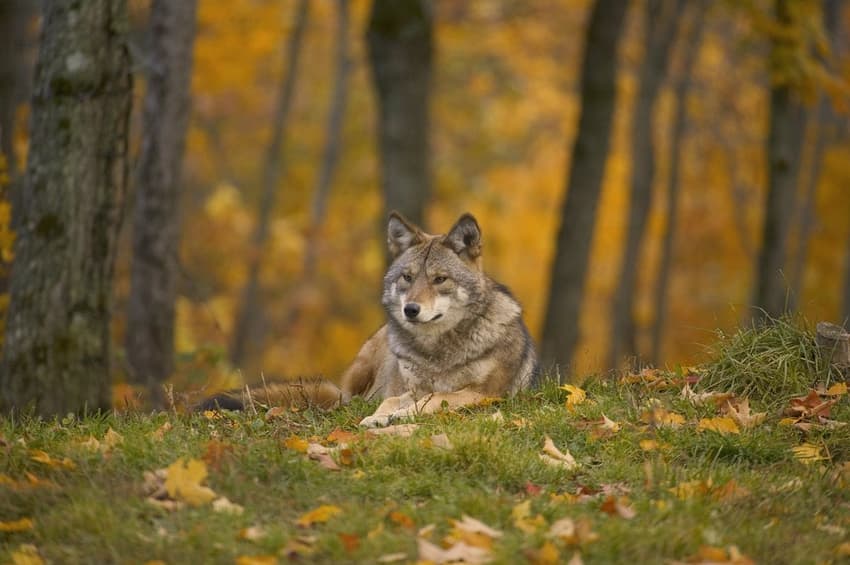Denmark to tag wolves in effort to learn more about returning species

Researchers in Denmark are to fit wolves with satellite navigation receivers as part of information gathering authorities hope will alleviate the concerns of local residents and farmers.
Aarhus University has been given special permission by the Environmental Protection Agency (Miljøstyrelsen) to fit up to ten wolves with satellite navigation tags until March 2020, Ritzau reports.
The study will seek to improve knowledge of the habits and behaviour of the Danish wolves and how commonly they move close to people.
Wolves returned to wild areas in Denmark earlier this decade after being absent from the Scandinavian country for well over a century.
Tagging the wolves with satellite navigation equipment will also shed light on the size of the current population of the animal, the Ministry of Environment and Food wrote in a press statement.
“I understand why many people feel concerned. Particularly those who live close to the wolves. I would too,” minister Jakob Ellemann-Jensen told Ritzau.
“The aim of this study is to find out more about where the wolves go and whether there’s any need to feel nervous.
“We want to find out whether there are wolves that are not instinctively shy of people,” he added.
Although the species is protected in Denmark and may therefore not normally be captured, this is permitted in association with research.
The Wildlife Administration Council (Vildtforvaltningsrådet) at Ellemann-Jensen’s ministry is currently working on new guidelines for regulating the animal in cases where an individual is deemed to be a ‘problem wolf’, in accordance with a new definition released by the ministry earlier this year.
“The government is aware of the challenges the wolves bring. I have already taken the first steps towards more flexible regulation of wolves, taking into account the fact that wolves are now breeding in Denmark again,” the minister said in the press statement.
“I will also discuss the EU’s wolf regulation with other EU countries that are experiencing challenges related to the presence of wolves. It will also be advantageous to know more about Danish wolves’ behaviour here,” he added.
READ ALSO: Danish zoo director advises against wolf 'panic measures'
Comments
See Also
Aarhus University has been given special permission by the Environmental Protection Agency (Miljøstyrelsen) to fit up to ten wolves with satellite navigation tags until March 2020, Ritzau reports.
The study will seek to improve knowledge of the habits and behaviour of the Danish wolves and how commonly they move close to people.
Wolves returned to wild areas in Denmark earlier this decade after being absent from the Scandinavian country for well over a century.
Tagging the wolves with satellite navigation equipment will also shed light on the size of the current population of the animal, the Ministry of Environment and Food wrote in a press statement.
“I understand why many people feel concerned. Particularly those who live close to the wolves. I would too,” minister Jakob Ellemann-Jensen told Ritzau.
“The aim of this study is to find out more about where the wolves go and whether there’s any need to feel nervous.
“We want to find out whether there are wolves that are not instinctively shy of people,” he added.
Although the species is protected in Denmark and may therefore not normally be captured, this is permitted in association with research.
The Wildlife Administration Council (Vildtforvaltningsrådet) at Ellemann-Jensen’s ministry is currently working on new guidelines for regulating the animal in cases where an individual is deemed to be a ‘problem wolf’, in accordance with a new definition released by the ministry earlier this year.
“The government is aware of the challenges the wolves bring. I have already taken the first steps towards more flexible regulation of wolves, taking into account the fact that wolves are now breeding in Denmark again,” the minister said in the press statement.
“I will also discuss the EU’s wolf regulation with other EU countries that are experiencing challenges related to the presence of wolves. It will also be advantageous to know more about Danish wolves’ behaviour here,” he added.
READ ALSO: Danish zoo director advises against wolf 'panic measures'
Join the conversation in our comments section below. Share your own views and experience and if you have a question or suggestion for our journalists then email us at [email protected].
Please keep comments civil, constructive and on topic – and make sure to read our terms of use before getting involved.
Please log in here to leave a comment.